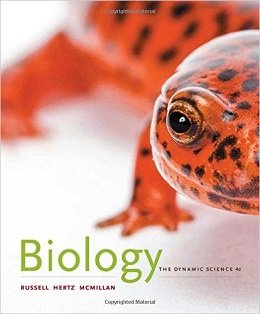- فهرست کتاب ها
- قلب و عروق، قفسه سینه
- نورولوژی، جراحی مغز و اعصاب و علوم اعصاب
- چشم پزشکی، بینایی سنجی
- دندان پزشکی، دهان و فک و صورت
- دستگاه گوارشی و کبد
- گوش، حلق و بینی
- ریه و مجاری تنفسی
- ارولوژی و نفرولوژی
- ارتوپدی و روماتولوژی
- پوست و مو و ناخن (درماتولوژی)
- جراحی (عمومی،زیبایی و ..)
- زنان و زایمان
- پزشکی بازسازی و احیا
- بیماریهای عفونی و قارچی
- غدد و متابولیسم
- سرطان و تومور شناسی
- معاینات و علائم تشخیصی
- بیهوشی (عمومی و موضعی)
- رادیولوژی، پرتو نگاری، سونوگرافی، اسکن، MRI، تصویربرداری، ماموگرافی
- تروما (ارتوپدی، فک و صورت، مغزی)
- آموزش و تحقیقات پزشکی، آمادگی آزمون و منابع پزشکی
- آناتومی و فیزیولوژی
- ایمونولوژی و آلرژی
- پاتولوژی، سیتوپاتولوژی و سیتولوژی
- پروتز و اندام مصنوعی
- پزشکی کودکان، نوزادان و جنین شناسی
- سلول های بنیادی
- هماتولوژی (خون شناسی) و پزشکی انتقال خون
- چاقی، تغذیه و رژیم غذایی
- اخلاق پزشکی
- پزشک قانونی
- پیرپزشکی و پزشکی سالمندان
- مراقبت های ویژه، حاد و بحرانی
- پیوند اعضا
- داروسازی، داروشناسی و دارودرمانی
- روانپزشکی
- دامپزشکی
- پرستاری و دستیاری پزشک
- علوم آزمایشگاهی
- سم شناسی
- انگل شناسی
- ژن شناسی و ژن درمانی (ژنتیک)
- بافت شناسی و مهندسی بافت
- تکنولوژی و بیوتکنولوژی پزشکی
- توان بخشی، کاردرمانی، ورزش درمانی
- پزشکی سنتی و گیاهی و پزشکی جایگزین
- بهداشت و درمان
- مهندسی شیمی
- مهندسی پزشکی
- مهندسی صنایع غذایی
- فیزیک و بیوفیزیک
- زیست شناسی (بیولوژی سلولی و مولکولی)
- شیمی
- بیوشیمی (پزشکی، دارویی و …) و شیمی بالینی
- بیو انفورماتیک، انفورماتیک پزشکی
- ثبت سفارش کتاب
- نرم افزارهای مورد نیاز
- پشتیبانی بوک باز
دانلود کتاب بیولوژی: علم پویا (ویرایش ۲۰۱۷)
Biology: The Dynamic Science, 4ed
Russell/Hertz/McMillan, BIOLOGY: THE DYNAMIC SCIENCE 4e and MindTap teach Biology the way scientists practice it by emphasizing and applying science as a process. You learn not only what scientists know, but how they know it, and what they still need to learn. The authors explain complex ideas clearly and describe how biologists collect and interpret evidence to test hypotheses about the living world. Throughout, Russell and MindTap provide engaging applications, develop quantitative analysis and mathematical reasoning skills, and build conceptual understanding.
About the Author
Peter J. Russell received a B.Sc. in Biology from the University of Sussex, England, in 1968 and a Ph.D. in Genetics from Cornell University in 1972. He has been a member of the Biology faculty of Reed College since 1972; he is currently a Professor of Biology. He teaches a section of the introductory biology course, a genetics course, an advanced molecular genetics course, and a research literature course on molecular virology. In 1987, he received the Burlington Northern Faculty Achievement Award from Reed College in recognition of his excellence in teaching. Since 1986, he has been the author of a successful genetics textbook; current editions are “iGenetics: A Mendelian Approach, iGenetics: A Molecular Approach,” and “Essential iGenetics”. He wrote nine of the BioCoach Activities for The Biology Place. Peter Russell’s research is in the area of molecular genetics, with a specific interest in characterizing the role of host genes in pathogenic RNA plant virus gene expression; yeast is used as the model host. His research has been funded by agencies including the National Institutes of Health, the National Science Foundation, and the American Cancer Society. He has published his research results in a variety of journals, including “Genetics, Journal of Bacteriology, Molecular and General Genetics, Nucleic Acids Research, Plasmid, and Molecular and Cellular Biology.” He has a long history of encouraging faculty research involving undergraduates, including co-founding the biology division of the Council on Undergraduate Research (CUR) in l985. He was Principal Investigator/Program Director of an NSF Award for the Integration of Research and Education (AIRE) to Reed College, 1998-2002.
Paul E. Hertz was born and raised in New York City. He received a bachelor’s degree in Biology at Stanford University in 1972, a master’s degree in Biology at Harvard University in 1973, and a doctorate in Biology at Harvard University in 1977. While completing field research for the doctorate, he served on the Biology faculty of the University of Puerto Rico at Rio Piedras. After spending 2 years as an Isaac Walton Killam Postdoctoral Fellow at Dalhousie University, Hertz accepted a teaching position at Barnard College, where he has taught since 1979. He was named Ann Whitney Olin Professor of Biology in 2000, and he received The Barnard Award for Excellence in Teaching in 2007. In addition to serving on numerous college committees, Professor Hertz chaired Barnard’s Biology Department for 8 years. He is also the Program Director of the Hughes Science Pipeline Project at Barnard, an undergraduate curriculum and research program funded continuously by the Howard Hughes Medical Institute since 1992. The Pipeline Project includes the Intercollegiate Partnership, a program for local community college students that facilitates their transfer to 4-year colleges and universities. He teaches one semester of the introductory sequence for Biology majors and preprofessional students, lecture and laboratory course in vertebrate zoology and ecology, and a year-long seminar that introduces first-year students to scientific research. Professor Hertz is an animal physiological ecologist with a specific research interest in the thermal biology of lizards. He has conducted fieldwork in the West Indies since the mid-1970s, most recently focusing on the lizards of Cuba. His work has been funded by the National Science Foundation, and he has published his research in such prestigious journals as “The American Naturalist, Ecology, Nature, Oecologia,” and “Proceedings of the Royal Society.”
Beverly McMillan has been a science writer for more than 25 years and is coauthor of a college text in human biology, now in its eighth edition. She was worked extensively in educational and commercial publishing, including 8 years in editorial management positions in the college divisions of Random House and McGraw-Hill. In a multifaceted freelance career, Bev also has written or coauthored 10 trade books, as well as story panels for exhibitions at the Science Museum of Virginia and the San Francisco Exploratorium. She has worked as a radio producer and speechwriter for the University of California system and as science writer and media relations advisor for the Virginia Institute of Marine Science of the College of William and Mary. She holds undergraduate and graduate degrees from the University of California, Berkeley.
Contents
Chapter 1: Introduction to Biological Concepts and Research
Chapter 2: Lifer Chemistry, and Water
Chapter 3: Biological Molecules: The Carbon Compounds of Life
Chapter 4: Cells
Chapter 5: Membranes and Transport
Chapter 6: Energy, Enzymes, and Biological Reactions
Chapter 7: Cellular Respiration: Harvesting Chemical Energy
Chapter 8: Photosynthesis
Chapter 9: Cell Communication
Chapter 10: Cell Division and Mitosis
Chapter 11: Meiosis: The Cellular Basis of Sexual Reproduction
Chapter 12: Mendelr Genesr and Inheritance
Chapter 13: Genesr Chromosomes, and Human Genetics
Chapter 14: DMA Structure and Replication
Chapter 15: From DMA to Protein
Chapter 16: Regulation of Gene Expression
Chapter 17: Bacterial and Viral Genetics
Chapter 18: DMA Technologies: Making and Using Genetically Altered Organismsr and Other Applications
Chapter 19: Genomes and Proteomes
Chapter 20: Development of Evolutionary Thinking
Chapter 21: Microevolution: Genetic Changes within Populations
Chapter 22: Speciation
Chapter 23: Paleobiology and Macroevolution
Chapter 24: Systematics and Phylogenetics: Revealing the Tree of Life
Chapter 25: The Origin of Life
Chapter 26: Prokaryotes: Bacteria and Archaea
Chapter 27: Protists
Chapter 28: Seedless Plants
Chapter 29: Seed Plants
Chapter 30: Fungi
Chapter 31: Animal Phylogeny, Acoelomatesr and Protostomes
Chapter 32: Deuterostomes: Vertebrates and Their Closest Relatives
Chapter 33: The Plant Body
Chapter 34: Transport in Plants
Chapter 35: Plant Nutrition
Chapter 36: Reproduction and Development in Flowering Plants
Chapter 37: Plant Signals and Responses to the Environment
Chapter 38: Introduction to Animal Organization and Physiology
Chapter 39: Information Flow and the Neuron
Chapter 40: Nervous Systems
Chapter 41: Sensory Systems
Chapter 42: The Endocrine System
Chapter 43: Muscles, Bones, and Body Movements
Chapter 44: The Circulatory System
Chapter 45: Defenses against Disease
Chapter 46: Gas Exchange: The Respiratory System
Chapter 47: Animal Nutrition
Chapter 48: Regulating the Internal Environment
Chapter 49: Animal Reproduction
Chapter 50: Animal Development
Chapter 51: Ecology and the Biosphere
Chapter 52: Population Ecology
Chapter 53: Population Interactions and Community Ecology
Chapter 54: Ecosystems and Global Change
Chapter 55: Biodiversity and Conser/ation Biology
Chapter 56: Animal Behavior
لینک کوتاه : https://bookbaz.ir/?p=51691
نویسنده : Peter J. Russell , Paul E. Hertz
ناشر : Brooks Cole; 4 edition
سال انتشار : 2017
زبان کتاب : انگلیسی
نوع فایل : PDF
تعداد صفحات : 1542
(ISBN) شابک : 1305389891
قیمت کتاب درآمازون : $278.09
حجم فایل : 198 MB
کتاب های مرتبط:
 دانلود کتاب زیست شناسی و کاربرد درمانی سلول های مزانشیمی (۲ جلدی)
دانلود کتاب زیست شناسی و کاربرد درمانی سلول های مزانشیمی (۲ جلدی)The Biology and Therapeutic Application of Mesenchymal Cells, 2-Vol, 1ed
 دانلود کتاب بیولوژی انسانی میدر
دانلود کتاب بیولوژی انسانی میدرMader’s Human Biology 17th Edition
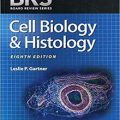 دانلود کتاب بیولوژی و هیستولوژی سلولی BRS
دانلود کتاب بیولوژی و هیستولوژی سلولی BRSBRS Cell Biology and Histology, 8ed
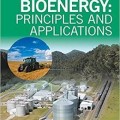 دانلود کتاب بیوانرژی: اصول و کاربردها
دانلود کتاب بیوانرژی: اصول و کاربردهاBioenergy: Principles and Applications, 1ed
 دانلود کتاب بیولوژی کمپبل (ویرایش ۲۰۱۷)
دانلود کتاب بیولوژی کمپبل (ویرایش ۲۰۱۷)Campbell Biology, 11ed
 دانلود کتاب ایراد هندسی تشکیل استخوان
دانلود کتاب ایراد هندسی تشکیل استخوان The Geometric Induction of Bone Formation, 1ed
 دانلود کتاب بیوفیزیک و بیوشیمی غضروف ها توسط NMR و MRI
دانلود کتاب بیوفیزیک و بیوشیمی غضروف ها توسط NMR و MRIBiophysics and Biochemistry of Cartilage by NMR and MRI, 1ed
 دانلود کتاب درخواست سوالات در زیست شناسی
دانلود کتاب درخواست سوالات در زیست شناسی Asking Questions in Biology, 5ed
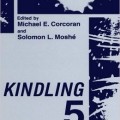 دانلود کتاب کیندلینگ ۵ (پیشرفت در زیست شناسی رفتاری)
دانلود کتاب کیندلینگ ۵ (پیشرفت در زیست شناسی رفتاری)Kindling 5 (Advances in Behavioral Biology), 1ed
 دانلود کتاب زیست شناسی سولومون
دانلود کتاب زیست شناسی سولومونBiology Solomon, 10ed
 دانلود کتاب رتینوئیدها: زیست شناسی، بیوشیمی و بیماری
دانلود کتاب رتینوئیدها: زیست شناسی، بیوشیمی و بیماریThe Retinoids: Biology, Biochemistry, and Disease, 1ed
 دانلود کتاب سلول بنیادی درمانی برای سرطان
دانلود کتاب سلول بنیادی درمانی برای سرطانStem Cell Therapeutics for Cancer, 1ed
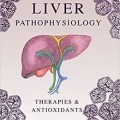 دانلود کتاب پاتوفیزیولوژی کبد: درمان و آنتی اکسیدان ها
دانلود کتاب پاتوفیزیولوژی کبد: درمان و آنتی اکسیدان هاLiver Pathophysiology: Therapies and Antioxidants, 1ed
 دانلود کتاب تکنیک های تصویربرداری نوری در زیست شناسی سلولی
دانلود کتاب تکنیک های تصویربرداری نوری در زیست شناسی سلولی Optical Imaging Techniques in Cell Biology, 2ed
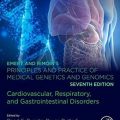 دانلود کتاب اصول و عملکرد در ژنتیک و ژنومیک پزشکی امری و ریموین: اختلالات قلبی عروقی، تنفسی و گوارشی
دانلود کتاب اصول و عملکرد در ژنتیک و ژنومیک پزشکی امری و ریموین: اختلالات قلبی عروقی، تنفسی و گوارشیEmery and Rimoin’s Principles and Practice of Medical Genetics and Genomics: Cardiovascular, Respiratory, and Gastrointestinal Disorders, 7ed
 دانلود کتاب درمان با سلول های بنیادی: ملاحظات عملی
دانلود کتاب درمان با سلول های بنیادی: ملاحظات عملیStem Cell Therapy: Practical Considerations, 1ed
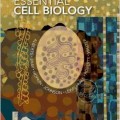 دانلود کتاب زیست شناسی سلولی اساسی
دانلود کتاب زیست شناسی سلولی اساسیEssential Cell Biology, 4ed
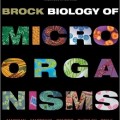 دانلود کتاب زیست شناسی میکروارگانیسم براک
دانلود کتاب زیست شناسی میکروارگانیسم براکBrock Biology of Microorganisms, 14ed
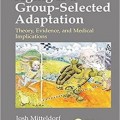 دانلود کتاب پیری سازگاری گروهی
دانلود کتاب پیری سازگاری گروهیAging is a Group-Selected Adaptation, 1ed
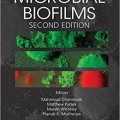 دانلود کتاب بیوفیلم های میکروبی
دانلود کتاب بیوفیلم های میکروبیMicrobial Biofilms, 2ed
 دانلود کتاب پیری: کاوش یک پدیده پیچیده
دانلود کتاب پیری: کاوش یک پدیده پیچیدهAging: Exploring a Complex Phenomenon, 1ed
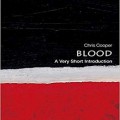 دانلود کتاب خون: مقدمه بسیار کوتاه
دانلود کتاب خون: مقدمه بسیار کوتاهBlood: A Very Short Introduction, 1ed
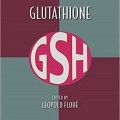 دانلود کتاب گلوتاتیون (استرس اکسیداتیو و بیماری)
دانلود کتاب گلوتاتیون (استرس اکسیداتیو و بیماری)Glutathione (Oxidative Stress and Disease), 1ed
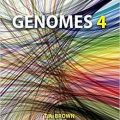 دانلود کتاب ژنوم ۴
دانلود کتاب ژنوم ۴Genomes 4, 4ed
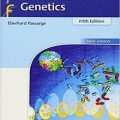 دانلود کتاب اطلس رنگی ژنتیک
دانلود کتاب اطلس رنگی ژنتیک Color Atlas of Genetics, 5ed
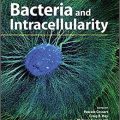 دانلود کتاب باکتری و درون سلولی
دانلود کتاب باکتری و درون سلولیBacteria and Intracellularity, 1ed
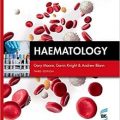 دانلود کتاب هماتولوژی (مبانی علوم زیست پزشکی)
دانلود کتاب هماتولوژی (مبانی علوم زیست پزشکی)Haematology (Fundamentals of Biomedical Science), 3ed
 دانلود کتاب انتقال حسی
دانلود کتاب انتقال حسی Sensory Transduction, 2ed
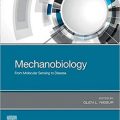 دانلود کتاب مکانوبیولوژی: از حس مولکولی تا بیماری
دانلود کتاب مکانوبیولوژی: از حس مولکولی تا بیماریMechanobiology: From Molecular Sensing to Disease, 1ed
 دانلود کتاب کتامین برای افسردگی مقاوم به درمان: نوروبیولوژی و کاربردها
دانلود کتاب کتامین برای افسردگی مقاوم به درمان: نوروبیولوژی و کاربردهاKetamine for Treatment-Resistant Depression: Neurobiology and Applications, 1ed
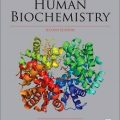 دانلود کتاب بیوشیمی انسانی لیتواک
دانلود کتاب بیوشیمی انسانی لیتواکHuman Biochemistry, 2ed
 دانلود کتاب مدیریت ناباروری: یک رویکرد عملی
دانلود کتاب مدیریت ناباروری: یک رویکرد عملیManagement of Infertility: A Practical Approach, 1ed
 دانلود کتاب ملزومات در آناتومی و فیزیولوژی انسان هول
دانلود کتاب ملزومات در آناتومی و فیزیولوژی انسان هولHole’s Essentials of Human Anatomy & Physiology, 15ed
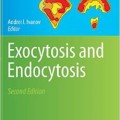 دانلود کتاب اندوسیتوز و اگزوسیتوز (روش ها در زیست شناسی مولکولی)
دانلود کتاب اندوسیتوز و اگزوسیتوز (روش ها در زیست شناسی مولکولی)Exocytosis and Endocytosis, 2ed
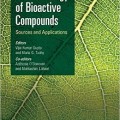 دانلود کتاب بیوتکنولوژی ترکیبات فعال زیستی: منابع و برنامه های کاربردی
دانلود کتاب بیوتکنولوژی ترکیبات فعال زیستی: منابع و برنامه های کاربردیBiotechnology of Bioactive Compounds: Sources and Applications, 1ed
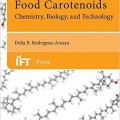 دانلود کتاب کاروتنوئیدها غذایی: شیمی، زیست شناسی و فناوری
دانلود کتاب کاروتنوئیدها غذایی: شیمی، زیست شناسی و فناوریFood Carotenoids: Chemistry, Biology and Technology, 1ed
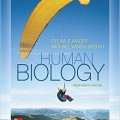 دانلود کتاب بیولوژی انسانی مِیدر
دانلود کتاب بیولوژی انسانی مِیدرHuman Biology, 14th Edition
 دانلود کتاب بیولوژی انسان: مفاهیم، کاربردها و مسائل
دانلود کتاب بیولوژی انسان: مفاهیم، کاربردها و مسائلBiology of Humans: Concepts, Applications, and Issues, 6ed
 دانلود کتاب زیست شناسی کمپبل: مفاهیم و ارتباطات
دانلود کتاب زیست شناسی کمپبل: مفاهیم و ارتباطاتCampbell Biology: Concepts & Connections, 9ed
 دانلود کتاب جهان زندگی (بیولوژی عمومی WCB)
دانلود کتاب جهان زندگی (بیولوژی عمومی WCB)The Living World (WCB General Biology), 9ed
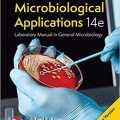 دانلود کتاب راهنمای کاربرد های آزمایشگاهی میکروبیولوژی بونسون
دانلود کتاب راهنمای کاربرد های آزمایشگاهی میکروبیولوژی بونسونBenson’s Microbiological Applications Laboratory Manual, 14ed
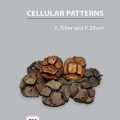 دانلود کتاب الگوهای سلولی
دانلود کتاب الگوهای سلولی Cellular Patterns, 1ed
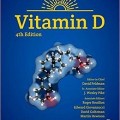 دانلود کتاب ویتامین D: سلامت، بیماری و درمان (جلد ۲)
دانلود کتاب ویتامین D: سلامت، بیماری و درمان (جلد ۲)Vitamin D: Volume 2: Health, Disease and Therapeutics, 4ed
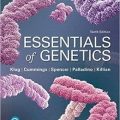 دانلود کتاب ملزومات ژنتیک
دانلود کتاب ملزومات ژنتیک Essentials of Genetics, 10ed
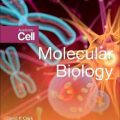 دانلود کتاب بیولوژی مولکولی
دانلود کتاب بیولوژی مولکولی Molecular Biology, 3ed
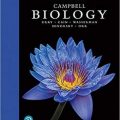 دانلود کتاب بیولوژی کمپبل
دانلود کتاب بیولوژی کمپبل Campbell Biology, 12ed
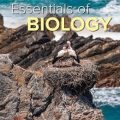 دانلود کتاب ملزومات بیولوژی مدر
دانلود کتاب ملزومات بیولوژی مدرEssentials of Biology, 7ed
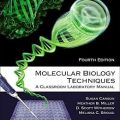 دانلود کتاب تکنیک های بیولوژی مولکولی: راهنمای آزمایشگاهی کلاس درس
دانلود کتاب تکنیک های بیولوژی مولکولی: راهنمای آزمایشگاهی کلاس درسMolecular Biology Techniques: A Classroom Laboratory Manual, 4ed
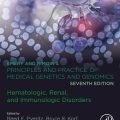 دانلود کتاب اصول و عملکرد در ژنتیک و ژنومیک پزشکی امری و ریموین: اختلالات هماتولوژیک، کلیوی و ایمونولوژیک
دانلود کتاب اصول و عملکرد در ژنتیک و ژنومیک پزشکی امری و ریموین: اختلالات هماتولوژیک، کلیوی و ایمونولوژیکEmery and Rimoin’s Principles and Practice of Medical Genetics and Genomics: Hematologic, Renal, and Immunologic Disorders, 7ed
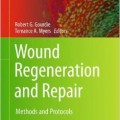 دانلود کتاب بازسازی و ترمیم زخم
دانلود کتاب بازسازی و ترمیم زخمWound Regeneration and Repair: Methods and Protocols
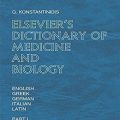 دانلود کتاب دیکشنری پزشکی و زیست شناسی الزویر
دانلود کتاب دیکشنری پزشکی و زیست شناسی الزویرElsevier’s Dictionary of Medicine and Biology
 دانلود کتاب مقدمه ای بر زیست شناسی سلولی و مولکولی سرطان
دانلود کتاب مقدمه ای بر زیست شناسی سلولی و مولکولی سرطانIntroduction to the Cellular and Molecular Biology of Cancer, 4ed
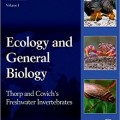 دانلود کتاب آب شیرین مهرگان تورپ و کوویچ: بوم شناسی و زیست شناسی عمومی
دانلود کتاب آب شیرین مهرگان تورپ و کوویچ: بوم شناسی و زیست شناسی عمومیThorp and Covich’s Freshwater Invertebrates: Ecology and General Biology, 4ed
 دانلود کتاب بیولوژی رِیوِن
دانلود کتاب بیولوژی رِیوِنRaven’s Biology, 11ed
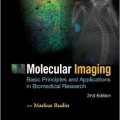 دانلود کتاب تصویربرداری مولکولی: مبانی، اصول و برنامه های کاربردی در تحقیقات پزشکی
دانلود کتاب تصویربرداری مولکولی: مبانی، اصول و برنامه های کاربردی در تحقیقات پزشکیMolecular Imaging: Basic Principles and Applications in Biomedical Research, 2ed
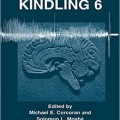 دانلود کتاب کیندلینگ ۶ (پیشرفت در زیست شناسی رفتاری)
دانلود کتاب کیندلینگ ۶ (پیشرفت در زیست شناسی رفتاری)Kindling 6 (Advances in Behavioral Biology), 1ed
 دانلود کتاب کشت سلولهای حیوانات: راهنمای تکنیک اساسی و برنامه های تخصصی
دانلود کتاب کشت سلولهای حیوانات: راهنمای تکنیک اساسی و برنامه های تخصصیCulture of Animal Cells: A Manual of Basic Technique and Specialized Applications, 7ed
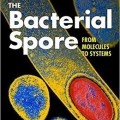 دانلود کتاب هاگ باکتریایی: از مولکولها به سیستم
دانلود کتاب هاگ باکتریایی: از مولکولها به سیستمThe Bacterial Spore: From Molecules to Systems, 1ed
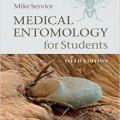 دانلود کتاب حشره شناسی پزشکی برای دانشجویان
دانلود کتاب حشره شناسی پزشکی برای دانشجویانMedical Entomology for Students, 5ed
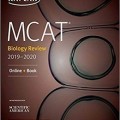 دانلود کتاب مرور بیولوژی MCAT 2019-2020 کاپلان
دانلود کتاب مرور بیولوژی MCAT 2019-2020 کاپلانMCAT Biology Review 2019-2020
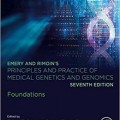 دانلود کتاب اصول و عمل ژنتیک پزشکی و ژنومیک امری و ریمیون: مبانی
دانلود کتاب اصول و عمل ژنتیک پزشکی و ژنومیک امری و ریمیون: مبانیEmery and Rimoin’s Principles and Practice of Medical Genetics and Genomics: Foundations, 7ed
 دانلود کتاب راهنمای نشانه شناسی پزشکی دستگاه تنفسی
دانلود کتاب راهنمای نشانه شناسی پزشکی دستگاه تنفسی Medical Semiology Guide of the Respiratory System, 1ed
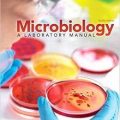 دانلود کتاب میکروبیولوژی: راهنمای آزمایشگاهی
دانلود کتاب میکروبیولوژی: راهنمای آزمایشگاهیMicrobiology: A Laboratory Manual, 12ed
 دانلود کتاب کانال های یونی غیر کلاسیک در سیستم عصبی
دانلود کتاب کانال های یونی غیر کلاسیک در سیستم عصبی Nonclassical Ion Channels in the Nervous System, 1ed
 دانلود کتاب اختلالات آنورکتال: تشخیص و درمان های غیر جراحی
دانلود کتاب اختلالات آنورکتال: تشخیص و درمان های غیر جراحیAnorectal Disorders: Diagnosis and Non-Surgical Treatments, 1ed
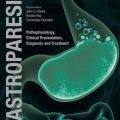 دانلود کتاب گاستروپارزی: پاتوفیزیولوژی، ارائه بالینی، تشخیص و درمان
دانلود کتاب گاستروپارزی: پاتوفیزیولوژی، ارائه بالینی، تشخیص و درمانGastroparesis: Pathophysiology, Clinical Presentation, Diagnosis and Treatment, 1ed
 دانلود کتاب فراساختار ائوزینوفیل: اطلس بیولوژی و پاتولوژی سلولی ائوزینوفیل
دانلود کتاب فراساختار ائوزینوفیل: اطلس بیولوژی و پاتولوژی سلولی ائوزینوفیلEosinophil Ultrastructure: Atlas of Eosinophil Cell Biology and Pathology, 1ed
 دانلود کتاب دیسفاژی: تشخیص و درمان اختلالات حرکتی مری
دانلود کتاب دیسفاژی: تشخیص و درمان اختلالات حرکتی مریDysphagia: Diagnosis and Treatment of Esophageal Motility Disorders, 1ed
 دانلود کتاب اصول بیولوژی بروکر
دانلود کتاب اصول بیولوژی بروکرPrinciples of Biology 4th Edition
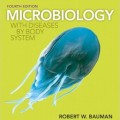 دانلود کتاب میکروبیولوژی با بیماری توسط سیستم بدن بائومن
دانلود کتاب میکروبیولوژی با بیماری توسط سیستم بدن بائومنMicrobiology with Diseases by Body System, 4ed
 دانلود کتاب زیست شناسی انسانی استار و مک میلان
دانلود کتاب زیست شناسی انسانی استار و مک میلانStarr and McMillan’s Human Biology, 11ed
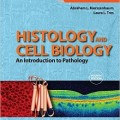 دانلود کتاب بافت شناسی و زیست شناسی سلولی: مقدمه ای بر آسیب شناسی
دانلود کتاب بافت شناسی و زیست شناسی سلولی: مقدمه ای بر آسیب شناسیHistology and Cell Biology: An Introduction to Pathology, 4ed
 دانلود کتاب آناتومی، بافت شناسی، زیست شناسی سلولی: ارزیابی پیش آزمون و بررسی
دانلود کتاب آناتومی، بافت شناسی، زیست شناسی سلولی: ارزیابی پیش آزمون و بررسیAnatomy, Histology, & Cell Biology: PreTest Self-Assessment & Review, 4ed
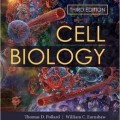 دانلود کتاب بیولوژی سلولی پولارد
دانلود کتاب بیولوژی سلولی پولاردPollard Cell Biology, 3ed
 دانلود کتاب ویروس ها: دوستان بیشتر از دشمنان
دانلود کتاب ویروس ها: دوستان بیشتر از دشمنانViruses: More Friends Than Foes, 1ed
 دانلود کتاب ویروس: راهنمای مصور ۱۰۱ میکروب باور نکردنی
دانلود کتاب ویروس: راهنمای مصور ۱۰۱ میکروب باور نکردنیVirus: An Illustrated Guide to 101 Incredible Microbes, 3ed
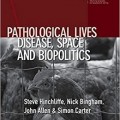 دانلود کتاب زندگی پاتولوژیک: بیماری، فضا و زیست سیاست
دانلود کتاب زندگی پاتولوژیک: بیماری، فضا و زیست سیاستPathological Lives: Disease, Space and Biopolitics, 1ed
 دانلود کتاب میکروبیولوژی نستر: دیدگاه انسانی
دانلود کتاب میکروبیولوژی نستر: دیدگاه انسانیNester’s Microbiology: A Human Perspective, 8ed
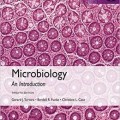 دانلود کتاب میکروبیولوژی: معرفی (ویرایش جهانی)
دانلود کتاب میکروبیولوژی: معرفی (ویرایش جهانی)Microbiology: an Introduction (Global Edition), 12ed
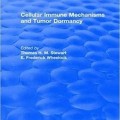 دانلود کتاب مکانیسم های ایمنی سلولی و خفتگی تومور
دانلود کتاب مکانیسم های ایمنی سلولی و خفتگی تومورCellular Immune Mechanisms and Tumor Dormancy, 1ed
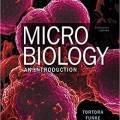 دانلود کتاب میکروبیولوژی: یک آشناسازی
دانلود کتاب میکروبیولوژی: یک آشناسازیMicrobiology: An Introduction, 13ed
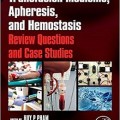 دانلود کتاب پزشکی انتقال خون، آفرزیس و هموستازی
دانلود کتاب پزشکی انتقال خون، آفرزیس و هموستازی Transfusion Medicine, Apheresis, and Hemostasis, 1ed
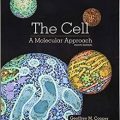 دانلود کتاب سلول: یک رویکرد مولکولی
دانلود کتاب سلول: یک رویکرد مولکولیThe Cell: A Molecular Approach, 8ed
 دانلود کتاب بیولوژی RNA غیر رمزگذار محاسباتی
دانلود کتاب بیولوژی RNA غیر رمزگذار محاسباتیComputational Non-coding RNA Biology, 1ed
 دانلود کتاب اصول پزشکی ترمیمی
دانلود کتاب اصول پزشکی ترمیمی Principles of Regenerative Medicine, 3ed
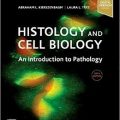 دانلود کتاب بافت شناسی و بیولوژی سلولی: درآمدی بر پاتولوژی
دانلود کتاب بافت شناسی و بیولوژی سلولی: درآمدی بر پاتولوژیHistology and Cell Biology: An Introduction to Pathology, 5ed
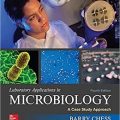 دانلود کتاب کاربردهای آزمایشگاهی در میکروبیولوژی: رویکرد مطالعه موردی
دانلود کتاب کاربردهای آزمایشگاهی در میکروبیولوژی: رویکرد مطالعه موردیLaboratory Applications in Microbiology: A Case Study Approach, 4ed
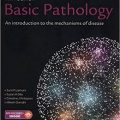 دانلود کتاب پاتولوژی اساسی: مقدمه ای در مکانیسم های بیماری
دانلود کتاب پاتولوژی اساسی: مقدمه ای در مکانیسم های بیماریBasic Pathology: An Introduction to the Mechanisms of Disease, 5ed
 دانلود کتاب توضیح مغز
دانلود کتاب توضیح مغز Brains Explained, 1ed
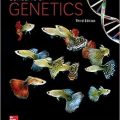 دانلود کتاب مفاهیم ژنتیک
دانلود کتاب مفاهیم ژنتیک Concepts of Genetics, 3ed
 دانلود کتاب اصول و تکنیک های بیوشیمی و بیولوژی مولکولی ویلسون و واکر
دانلود کتاب اصول و تکنیک های بیوشیمی و بیولوژی مولکولی ویلسون و واکرWilson and Walker’s Principles and Techniques of Biochemistry and Molecular Biology, 8ed
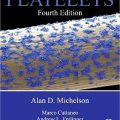 دانلود کتاب پلاکت ها
دانلود کتاب پلاکت هاPlatelets, 4ed
 دانلود کتاب Natural HDAC Inhibitors for Epigenetic Combating of Cancer Progression, 1ed
دانلود کتاب Natural HDAC Inhibitors for Epigenetic Combating of Cancer Progression, 1ed
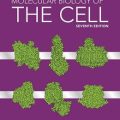 دانلود کتاب بیولوژی مولکولی سلول
دانلود کتاب بیولوژی مولکولی سلولMolecular Biology of the Cell, 7ed
 دانلود کتاب ویروس ها: از درک تا بررسی
دانلود کتاب ویروس ها: از درک تا بررسیViruses: From Understanding to Investigation, 2ed
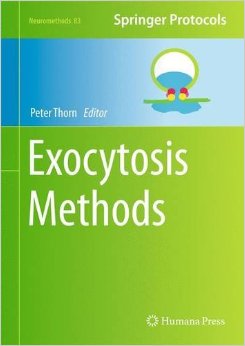 دانلود کتاب روش های اگزوسیتوز
دانلود کتاب روش های اگزوسیتوزExocytosis Methods
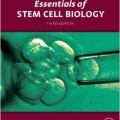 دانلود کتاب ملزومات زیست شناسی سلول های بنیادی
دانلود کتاب ملزومات زیست شناسی سلول های بنیادیEssentials of Stem Cell Biology, 3ed
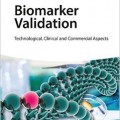 دانلود کتاب اعتبار سنجی نشانگر زیستی: جنبه های بالینی، فنی و تجاری
دانلود کتاب اعتبار سنجی نشانگر زیستی: جنبه های بالینی، فنی و تجاریBiomarker Validation: Technological, Clinical and Commercial Aspects
 دانلود کتاب میدانهای الکترومغناطیسی در زیست شناسی و پزشکی
دانلود کتاب میدانهای الکترومغناطیسی در زیست شناسی و پزشکیElectromagnetic Fields in Biology and Medicine
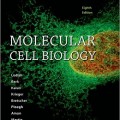 دانلود کتاب زیست شناسی سلولی مولکولی لودیش
دانلود کتاب زیست شناسی سلولی مولکولی لودیشMolecular Cell Biology, 8ed
 دانلود کتاب فیزیولوژی سلولی و ملکولی سلول های عصبی
دانلود کتاب فیزیولوژی سلولی و ملکولی سلول های عصبیMolecular and Cellular Physiology of Neurons, 2ed
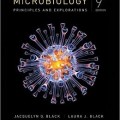 دانلود کتاب میکروبیولوژی بلک: اصول و اکتشافات
دانلود کتاب میکروبیولوژی بلک: اصول و اکتشافاتMicrobiology: Principles and Explorations, 9ed
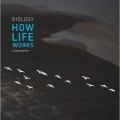 دانلود کتاب بیولوژی: چگونگی عملکرد حیات
دانلود کتاب بیولوژی: چگونگی عملکرد حیاتBiology: How Life Works, 2ed
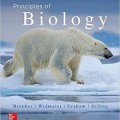 دانلود کتاب اصول بیولوژی بروکر
دانلود کتاب اصول بیولوژی بروکرPrinciples of Biology (Majors Biology), 2ed
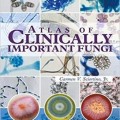 دانلود کتاب اطلس قارچ های بالینی مهم
دانلود کتاب اطلس قارچ های بالینی مهمAtlas of Clinically Important Fungi, 1ed
 دانلود کتاب بیوفیلم های میکروبی: بیولوژی اومیکس، اثرات ضد میکروبی و بالینی
دانلود کتاب بیوفیلم های میکروبی: بیولوژی اومیکس، اثرات ضد میکروبی و بالینیMicrobial Biofilms: Omics Biology, Antimicrobials and Clinical Implications, 1ed
 دانلود کتاب ویروس شناسی مولکولی ویروس های پاتوژنیک انسان
دانلود کتاب ویروس شناسی مولکولی ویروس های پاتوژنیک انسانMolecular Virology of Human Pathogenic Viruses, 1ed
 دانلود کتاب بافت شناسی: تصویر بزرگ
دانلود کتاب بافت شناسی: تصویر بزرگHistology: The Big Picture, 1ed
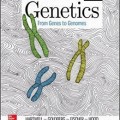 دانلود کتاب ژنتیک: از ژن ها به ژنوم ها
دانلود کتاب ژنتیک: از ژن ها به ژنوم هاGenetics: From Genes to Genomes, 6ed
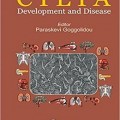 دانلود کتاب مژک: توسعه و بیماری
دانلود کتاب مژک: توسعه و بیماریCilia: Development and Disease, 1ed
 دانلود کتاب دوره بیولوژی سطح AS و A بین المللی کمبریج + سی دی
دانلود کتاب دوره بیولوژی سطح AS و A بین المللی کمبریج + سی دیCambridge International AS and A Level Biology Coursebook + CD-ROM, 4ed
 دانلود کتاب راهنمای سم شناسی عصبی رشد
دانلود کتاب راهنمای سم شناسی عصبی رشدHandbook of Developmental Neurotoxicology, 2ed
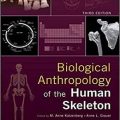 دانلود کتاب انسان شناسی بیولوژیکی اسکلت انسان
دانلود کتاب انسان شناسی بیولوژیکی اسکلت انسانBiological Anthropology of the Human Skeleton, 3ed
 دانلود کتاب راهنمای آزمایشگاهی برای آناتومی و فیزیولوژی انسان
دانلود کتاب راهنمای آزمایشگاهی برای آناتومی و فیزیولوژی انسانLaboratory Manual for Human Anatomy & Physiology, 4ed
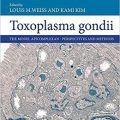 دانلود کتاب توکسوپلاسما گوندی
دانلود کتاب توکسوپلاسما گوندی Toxoplasma Gondii, 3ed
 دانلود کتاب آناتومی و فیزیولوژی: پیوستگی فرم و عملکرد
دانلود کتاب آناتومی و فیزیولوژی: پیوستگی فرم و عملکردAnatomy & Physiology: The Unity of Form and Function, 9ed
 دانلود کتاب بیولوژی اساسی و کاربردی استخوان
دانلود کتاب بیولوژی اساسی و کاربردی استخوانBasic and Applied Bone Biology, 2ed
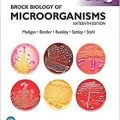 دانلود کتاب بیولوژی میکروارگانیسم ها براک (ویرایش جهانی)
دانلود کتاب بیولوژی میکروارگانیسم ها براک (ویرایش جهانی)Brock Biology of Microorganisms, Global Edition, 16ed
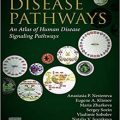 دانلود کتاب مسیرهای بیماری: اطلس مسیرهای سیگنالینگ بیماری های انسانی
دانلود کتاب مسیرهای بیماری: اطلس مسیرهای سیگنالینگ بیماری های انسانیDisease Pathways: An Atlas of Human Disease Signaling Pathways, 1ed
 دانلود کتاب اصول و عملکرد در ژنتیک و ژنومیک پزشکی امری و ریموین: ژنتیک پری ناتال و تولید مثل
دانلود کتاب اصول و عملکرد در ژنتیک و ژنومیک پزشکی امری و ریموین: ژنتیک پری ناتال و تولید مثلEmery and Rimoin’s Principles and Practice of Medical Genetics and Genomics: Perinatal and Reproductive Genetics, 7ed
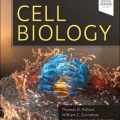 دانلود کتاب بیولوژی سلولی
دانلود کتاب بیولوژی سلولی Cell Biology, 4ed
 دانلود کتاب نوسان فشار در تشخیص و درمان زیست پزشکی
دانلود کتاب نوسان فشار در تشخیص و درمان زیست پزشکی Pressure Oscillation in Biomedical Diagnostics and Therapy, 1ed
 دانلود کتاب پاتوژنز باکتریایی: یک رویکرد مولکولی
دانلود کتاب پاتوژنز باکتریایی: یک رویکرد مولکولیBacterial Pathogenesis: A Molecular Approach, 4ed
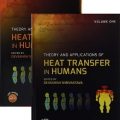 دانلود کتاب تئوری و کاربردهای انتقال حرارت در انسان (۲ جلدی)
دانلود کتاب تئوری و کاربردهای انتقال حرارت در انسان (۲ جلدی)Theory and Applications of Heat Transfer in Humans, 1ed
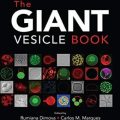 دانلود کتاب وزیکول غول پیکر
دانلود کتاب وزیکول غول پیکرThe Giant Vesicle Book, 1ed
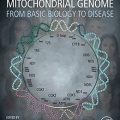 دانلود کتاب ژنوم میتوکندری انسان: از زیست شناسی پایه تا بیماری
دانلود کتاب ژنوم میتوکندری انسان: از زیست شناسی پایه تا بیماریThe Human Mitochondrial Genome: From Basic Biology to Disease, 1ed
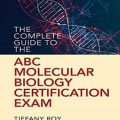 دانلود کتاب راهنمای کامل آزمون گواهینامه بیولوژی مولکولی ABC
دانلود کتاب راهنمای کامل آزمون گواهینامه بیولوژی مولکولی ABCThe Complete Guide to the ABC Molecular Biology Certification Exam, 1ed
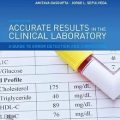 دانلود کتاب نتایج دقیق در آزمایشگاه بالینی: راهنمای تشخیص و تصحیح خطا
دانلود کتاب نتایج دقیق در آزمایشگاه بالینی: راهنمای تشخیص و تصحیح خطاAccurate Results in the Clinical Laboratory: A Guide to Error Detection and Correction, 2ed
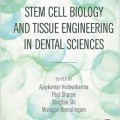 دانلود کتاب زیست شناسی سلول های بنیادی و مهندسی بافت در علوم دندانپزشکی
دانلود کتاب زیست شناسی سلول های بنیادی و مهندسی بافت در علوم دندانپزشکیStem Cell Biology and Tissue Engineering in Dental Sciences
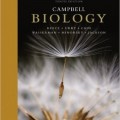 دانلود کتاب بیولوژی کمپبل
دانلود کتاب بیولوژی کمپبل Campbell Biology, 10ed
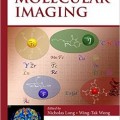 دانلود کتاب شیمی تصویربرداری مولکولی
دانلود کتاب شیمی تصویربرداری مولکولیThe Chemistry of Molecular Imaging, 1ed
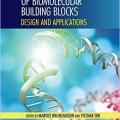 دانلود کتاب آنالوگ فلورسنت بلوک های ساختمان بیومولکولار
دانلود کتاب آنالوگ فلورسنت بلوک های ساختمان بیومولکولارFluorescent Analogs of Biomolecular Building Blocks, 1ed
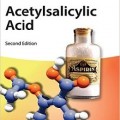 دانلود کتاب اَسِتیل سالیسیلیک اسید
دانلود کتاب اَسِتیل سالیسیلیک اسیدAcetylsalicylic Acid, 2ed
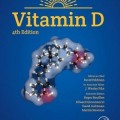 دانلود کتاب ویتامین D: بیوشیمی، فیزیولوژی و تشخیص (جلد ۱)
دانلود کتاب ویتامین D: بیوشیمی، فیزیولوژی و تشخیص (جلد ۱)Vitamin D: Volume 1: Biochemistry, Physiology and Diagnostics, 4ed
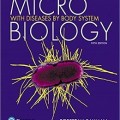 دانلود کتاب میکروبیولوژی با بیماری توسط سیستم بدن
دانلود کتاب میکروبیولوژی با بیماری توسط سیستم بدنMicrobiology with Diseases by Body System, 5ed
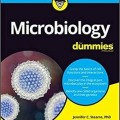 دانلود کتاب میکروبیولوژی برای مبتدیان
دانلود کتاب میکروبیولوژی برای مبتدیانMicrobiology For Dummies, 1ed
 دانلود کتاب آپوپتوز و فراتر از آن: راه های بسیار مرگ سلول ها (۲ جلدی)
دانلود کتاب آپوپتوز و فراتر از آن: راه های بسیار مرگ سلول ها (۲ جلدی)Apoptosis and Beyond: The Many Ways Cells Die, 2-Vol, 1ed
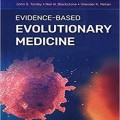 دانلود کتاب پزشکی تکاملی مبتنی بر شواهد
دانلود کتاب پزشکی تکاملی مبتنی بر شواهدEvidence-Based Evolutionary Medicine, 1ed
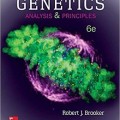 دانلود کتاب ژنتیک: آنالیز و اصول
دانلود کتاب ژنتیک: آنالیز و اصولGenetics: Analysis and Principles, 6ed
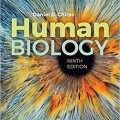 دانلود کتاب بیولوژی انسان چایراس
دانلود کتاب بیولوژی انسان چایراسHuman Biology, 9ed
 دانلود کتاب ایمونولوژی: دفاع از موکوسال و سطح بدن
دانلود کتاب ایمونولوژی: دفاع از موکوسال و سطح بدنImmunology: Mucosal and Body Surface Defences, 1ed
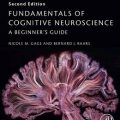 دانلود کتاب اصول علوم اعصاب شناختی
دانلود کتاب اصول علوم اعصاب شناختیFundamentals of Cognitive Neuroscience, 2ed
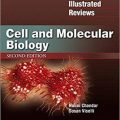 دانلود کتاب مرور مصور بیولوژی سلولی و مولکولی لیپینکات
دانلود کتاب مرور مصور بیولوژی سلولی و مولکولی لیپینکاتLippincott Illustrated Reviews: Cell and Molecular Biology, 2ed
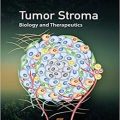 دانلود کتاب تومور استروما: بیولوژی و درمان
دانلود کتاب تومور استروما: بیولوژی و درمانTumor Stroma: Biology and Therapeutics, 1ed
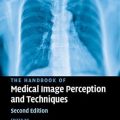 دانلود کتاب راهنمای درک تصویر پزشکی و تکنیک ها
دانلود کتاب راهنمای درک تصویر پزشکی و تکنیک هاThe Handbook of Medical Image Perception and Techniques, 2ed
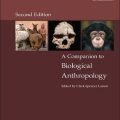 دانلود کتاب همراهی با انسان شناسی زیستی
دانلود کتاب همراهی با انسان شناسی زیستیA Companion to Biological Anthropology, 2ed
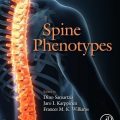 دانلود کتاب فنوتیپ های ستون فقرات
دانلود کتاب فنوتیپ های ستون فقراتSpine Phenotypes, 1ed
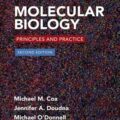 دانلود کتاب بیولوژی مولکولی: اصول و عمل
دانلود کتاب بیولوژی مولکولی: اصول و عملMolecular Biology: Principles and Practice, 2ed
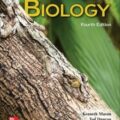 دانلود کتاب درک بیولوژی میسون
دانلود کتاب درک بیولوژی میسونUnderstanding Biology, 4ed
 دانلود کتاب فناوری سلول های بنیادی انسان و زیست شناسی: راهنمای تحقیق و آزمایشگاه
دانلود کتاب فناوری سلول های بنیادی انسان و زیست شناسی: راهنمای تحقیق و آزمایشگاهHuman Stem Cell Technology and Biology: A Research Guide and Laboratory Manual


